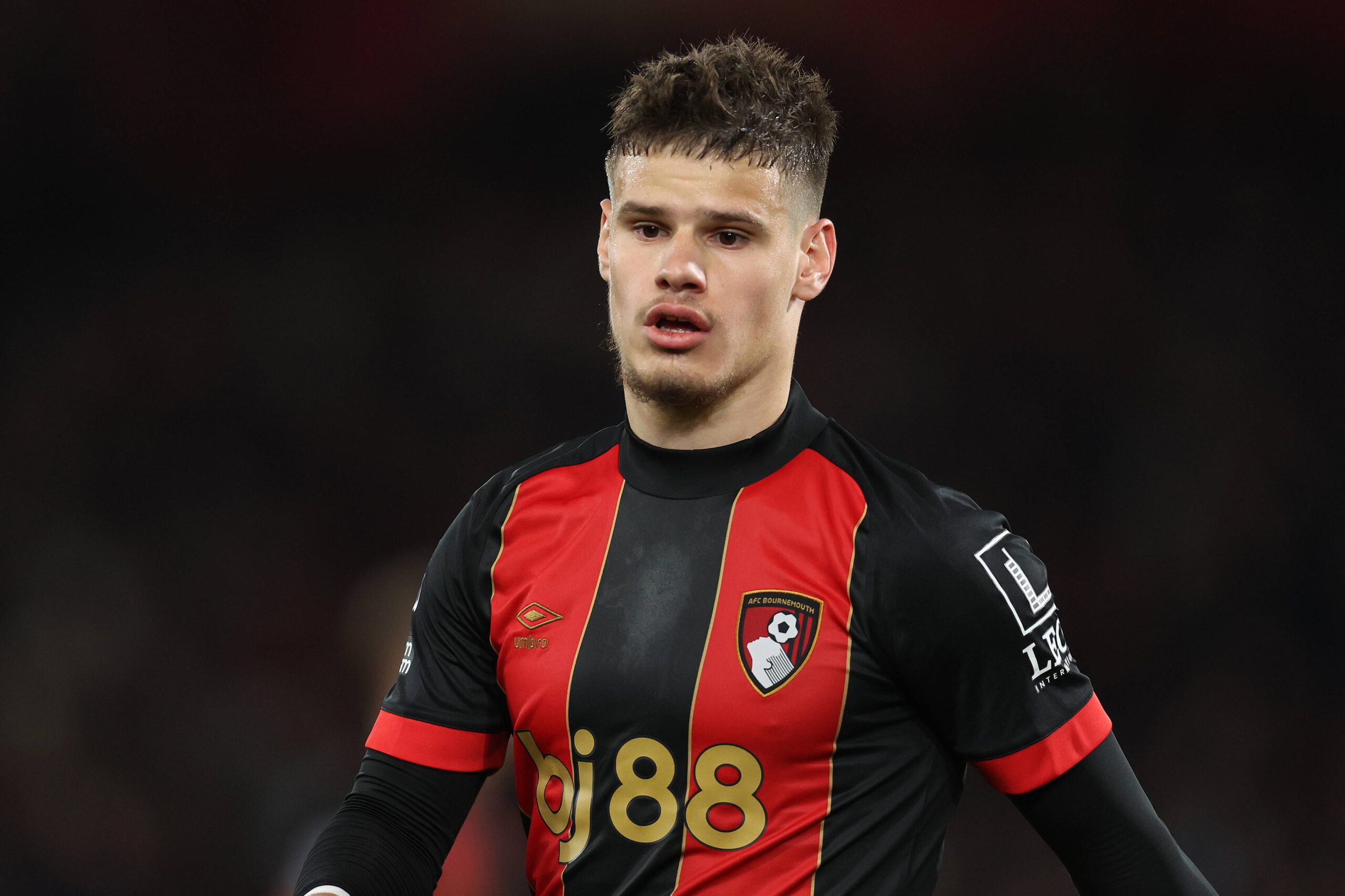Why Jeremie Frimpong and Milos Kerkez Could Be Game-Changers for Liverpool’s New Era
As Liverpool transitions into the Arne Slot era, attention has quickly turned to potential reinforcements — particularly in the full-back positions. In the latest episode of the Anfield Index Under Pressure podcast, data journalist Dan Kennett was joined by Simon Brundish, Dr Phil Barter, and Hamzah Khalique-Loonat for a forensic breakdown of two of Liverpool’s reported transfer targets: Jeremie Frimpong and Milos Kerkez.
Physicality and Power: Kerkez and Frimpong Fit the New Mold
Simon Brundish, armed with the sports science data that underpins Liverpool’s recruitment strategy, was effusive about both players. Though he stressed he doesn’t “get excited about transfers”, he admitted: “I am intrigued by Frimpong, he’s a freak.”
Brundish highlighted Frimpong’s remarkable athleticism, revealing that the Dutchman averages 83 high-intensity runs per game; far exceeding the Premier League full-back average of 69 and even Trent Alexander-Arnold’s 67. “That’s the kind of difference between Szoboszlai and an average Declan Rice-type midfielder,” he noted.
Kerkez, meanwhile, also impressed. At just 21 years old, he’s clocking top speeds of 35 km/h, and is producing 74 high-intensity runs per game, a full 10% more than Trent, and outpacing even Andy Robertson. “Kerkez is at his physical peak right now,” said Brundish, praising his “monster” physical output and stamina.
Speed, Sprinting, and Recovery: Frimpong’s Superpower
Brundish’s breakdown of Frimpong’s athletic profile was particularly compelling. “Frimpong is really twitchy — in a Mané kind of boingy way,” he explained, referencing his capacity to rapidly accelerate and decelerate. According to Brundish, Frimpong makes 40 sprints per game, while the Premier League’s season-high in a single game is 29. “It’s unbelievable,” he said. “He is much more efficient at sprinting than nearly everybody in the league.”

This translates to a very low metabolic cost, meaning Frimpong recovers quicker than most players. Brundish attributed this to his “twitchy tendons” and the ability to recycle kinetic energy with minimal energy expenditure — a critical trait for a high-intensity pressing system like Slot’s.
Frimpong’s repeated sprint actions, his agility in changing direction (over 200 accelerations/decelerations per game), and his durability, he has remained injury-free all season, mark him as a unique physical talent.
Evolving Tactics: From Classic Fullbacks to Modern Swiss Army Knives
Dr Phil Barter highlighted how Liverpool’s recruitment of Frimpong and Kerkez may reflect a philosophical shift. “What we currently assume is required in a Liverpool full-back might not be what is assumed next season,” he said, noting both players’ ability to play high and wide, recover quickly, and deliver into dangerous zones.
Crucially, both players register significantly higher passes and crosses into the final third than current options. Barter cited FBref data showing Frimpong is in the 80th percentile for passes into the final third, and Kerkez between the 78th and 56th, depending on the metric. “They cross and pass the ball into the penalty box,” he noted, contrasting with the declining final-third influence of Robertson and Costas Tsimikas.

Barter also praised their combined value: “For the combined fee of about £70 million total, it makes a lot of sense.”
System Fit and Tactical Intrigue
Hamzah Khalique-Loonat contextualised the tactical fit, “With Frimpong though, it’s very different,” he said. “You’re adding a very different dimension in how you attack that space on the right.” He predicted that Frimpong could disrupt defensive structures simply by forcing teams to abandon double-marking Mohamed Salah, which would “destroy a whole team structure really quickly.”
Hamzah wasn’t entirely sold on a major tactical overhaul. “I don’t think we’ll have a big tactical shift,” he said, adding that Kerkez would likely aim to “replicate what Robbo did at his peak.” But he acknowledged Frimpong’s profile allows for “a different dynamic,” especially when connected with Salah and a mobile midfield.
Concerns remain over defensive output. Frimpong, while excellent in duels, was flagged by Hamzah as having a negative defensive on-ball value (-0.02), according to StatsBomb metrics. “But overall value… is a net positive goal difference,” he clarified.
What This Means for Liverpool
Liverpool’s shift from conventional fullbacks to highly dynamic, physically elite profiles signals Arne Slot’s intent to modernise the team’s structure. These signings would allow Liverpool to pin opponents back, control transitions, and recover rapidly on counterattacks, without sacrificing offensive threat.
As Simon Brundish summarised, “They both demonstrated a really high capacity for all the work that Slot has shown he needs his full-backs to be doing.” For a team that’s seeking to remain competitive at the highest level, Jeremie Frimpong and Milos Kerkez could be more than just depth signings, they may be the very embodiment of Liverpool’s next tactical leap.




